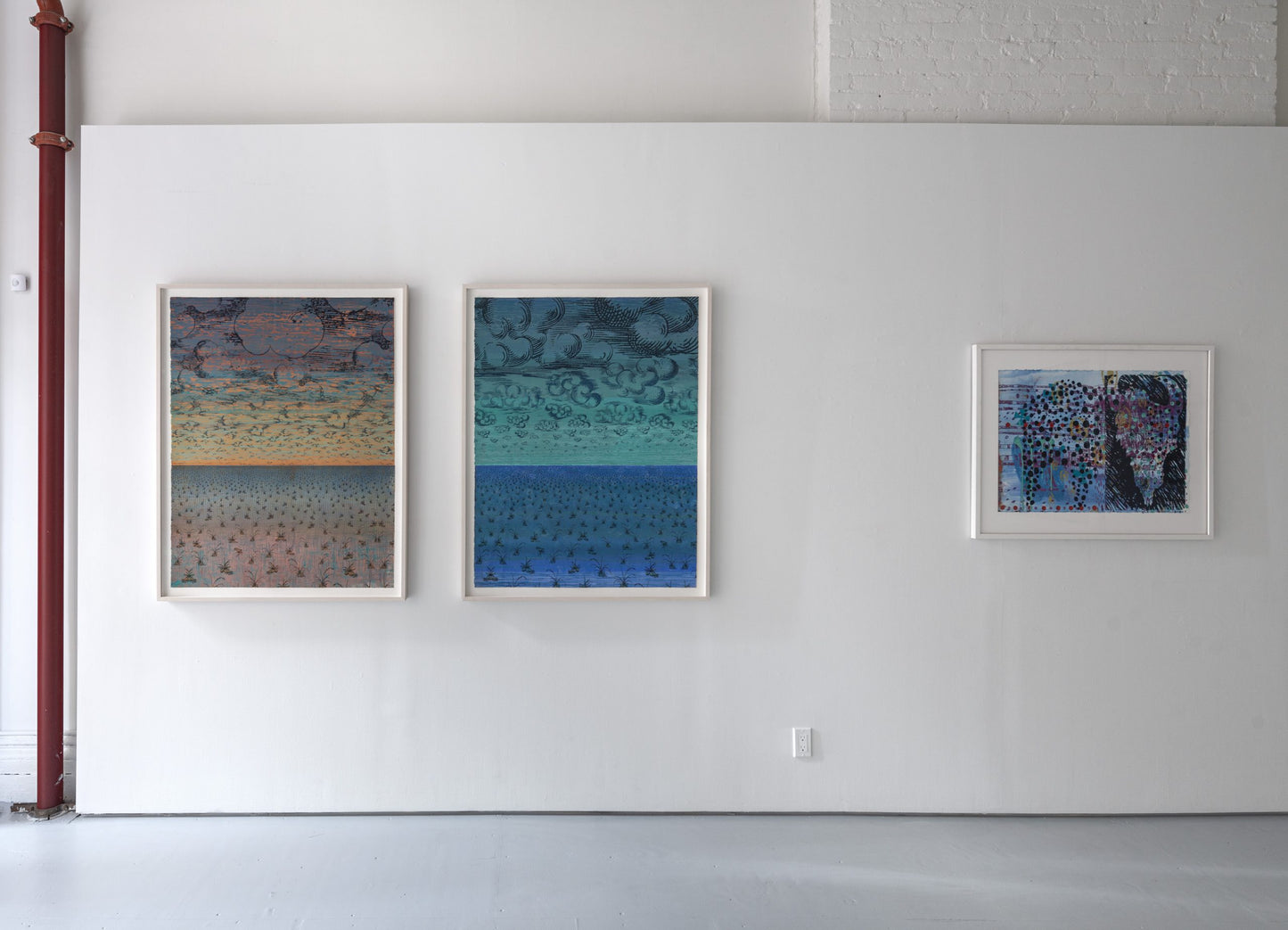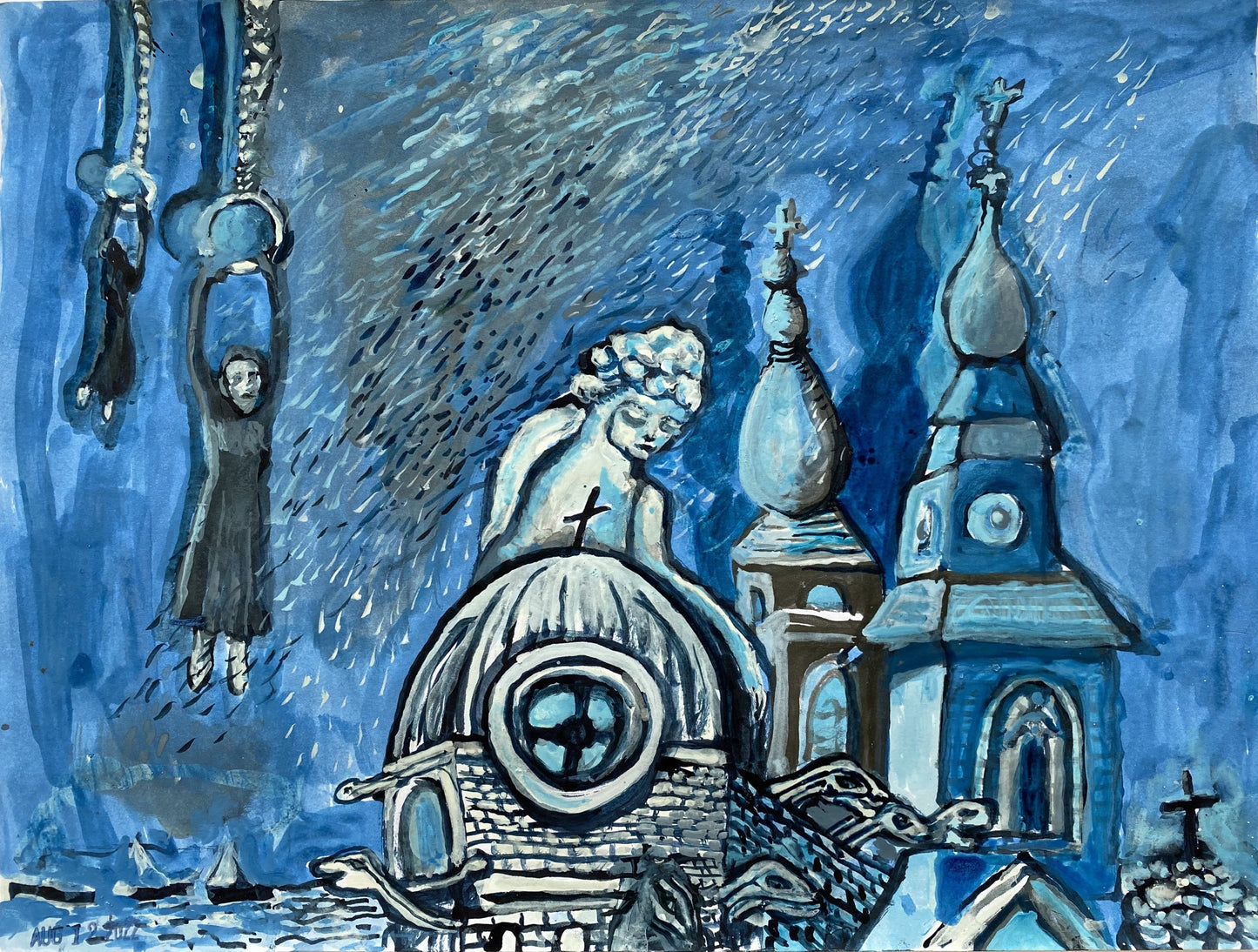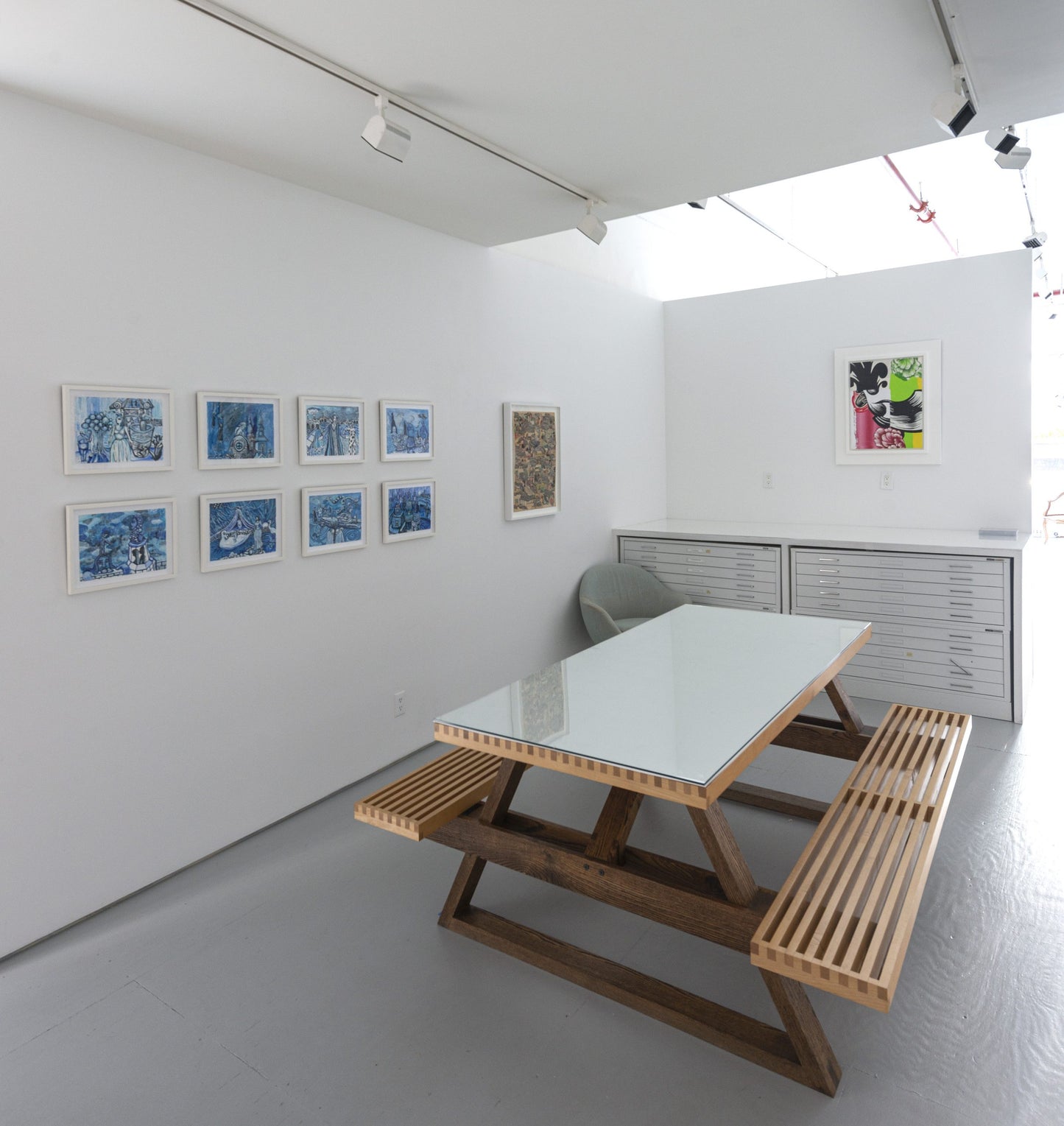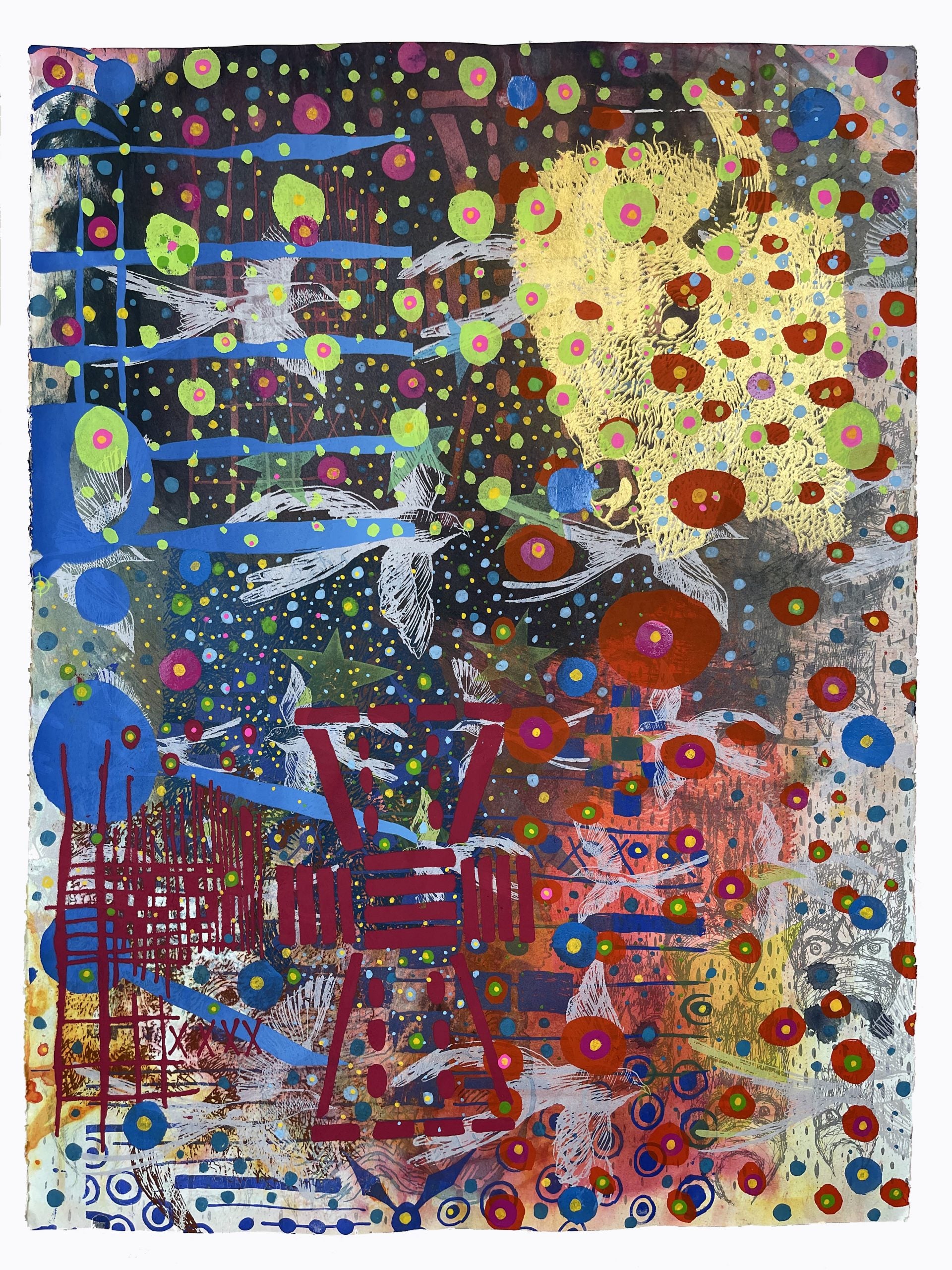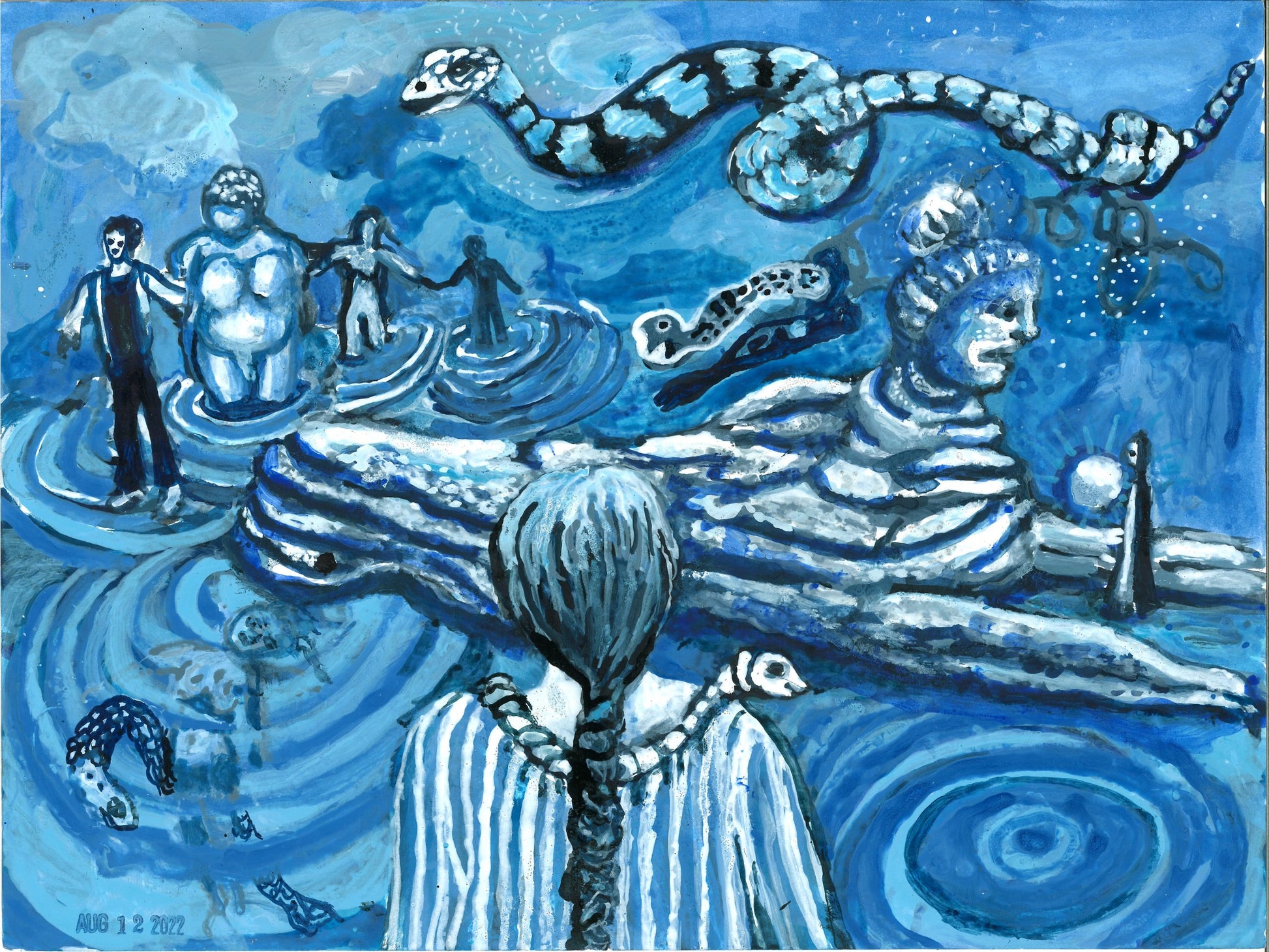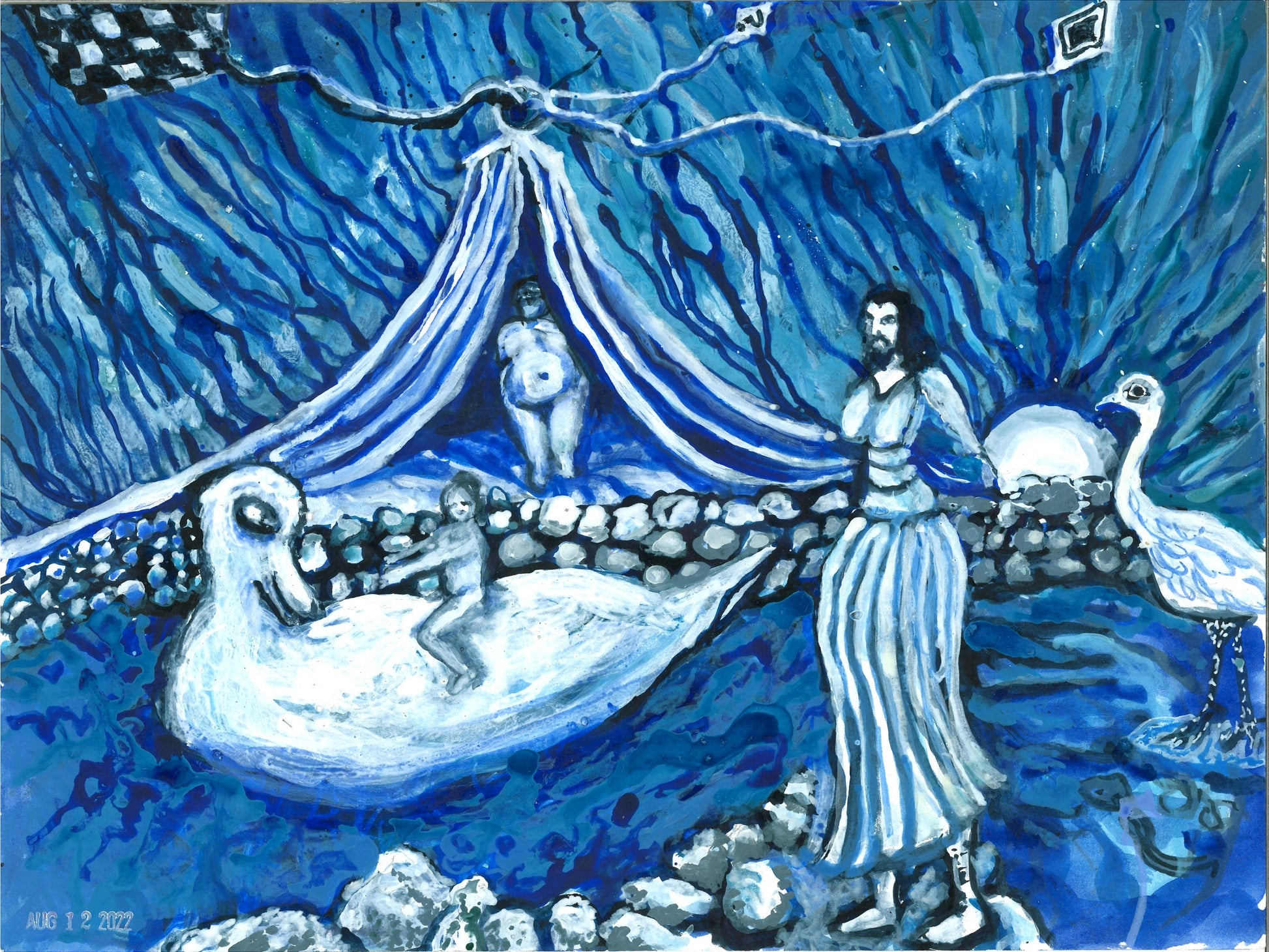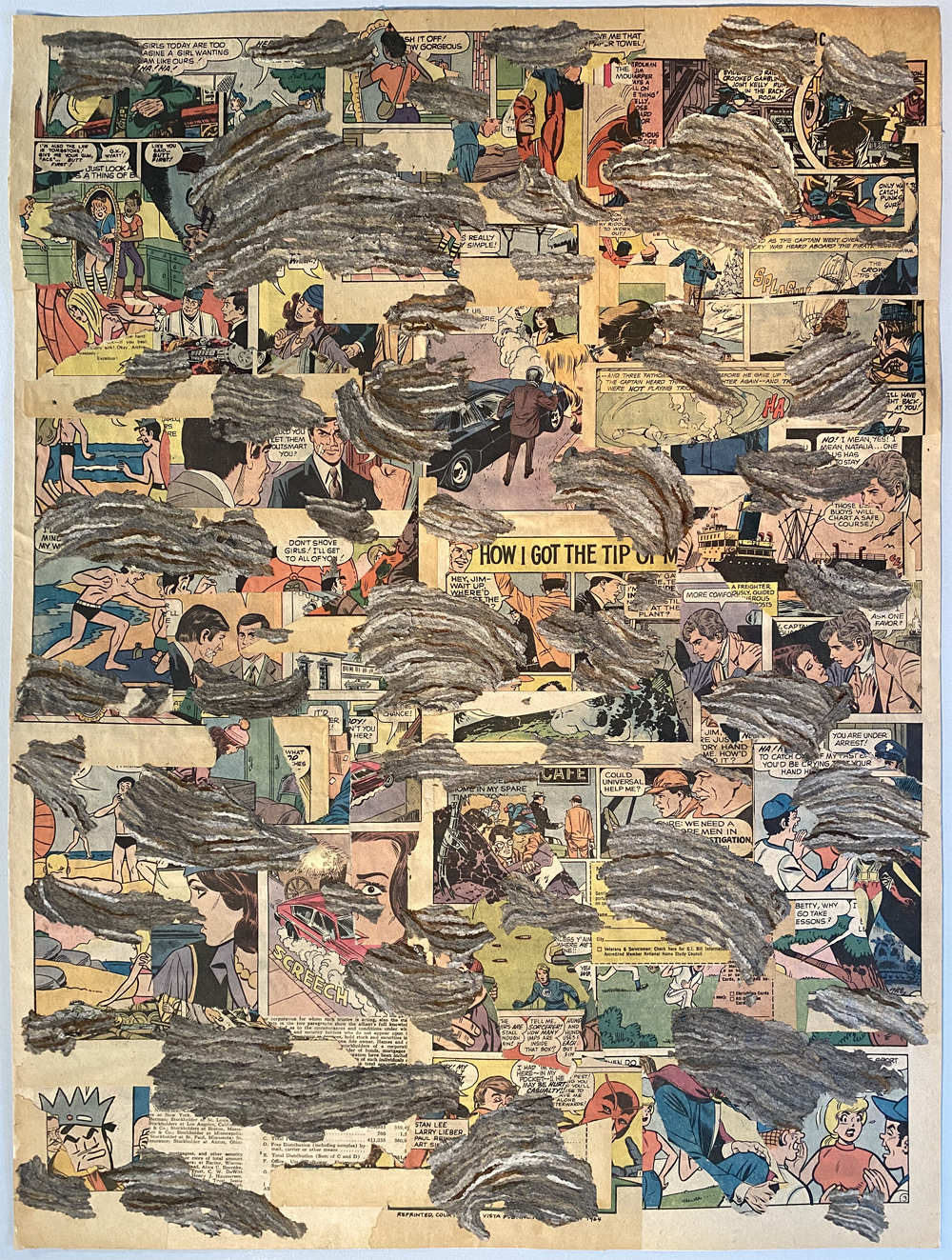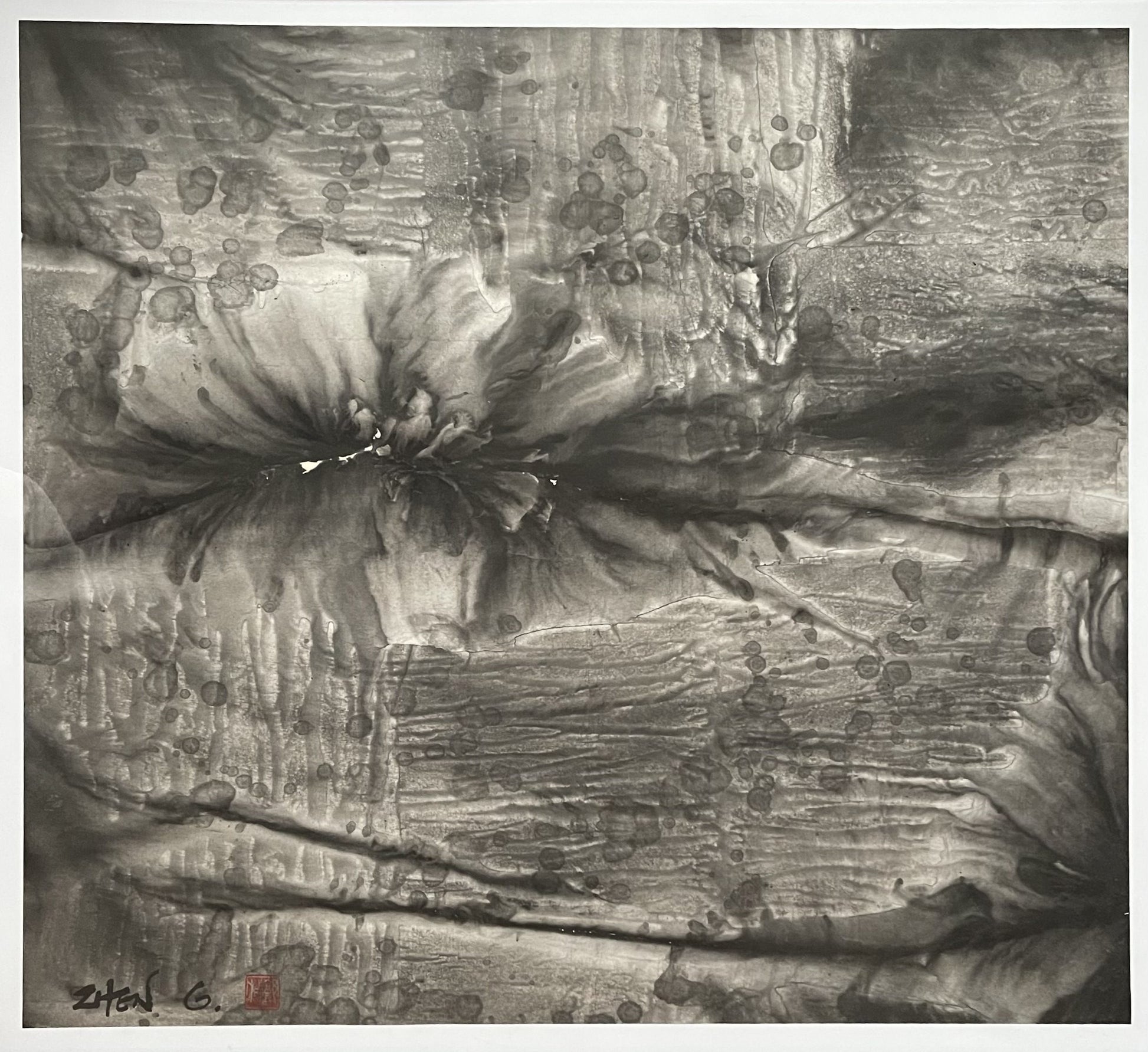into this world
Curated by Nina Jordan
November 17, 2022 ‒ January 7, 2023
Planthouse is thrilled to open a group exhibition curated by artist, Nina Jordan opening on November 17th. Included are eight artists: David Barthold, Zhen Guo, John Hitchcock, Wuon-Gean Ho, Michael Kupperman, Laurie Heller Marcus, Edie Overturf and Nicholas Ruth.
As an artist looking at others’ work, I am fascinated by how differently we all see things, at the uniqueness of each person’s vision. I find myself saying, “wow, how do they see like that?” When really experiencing a work of art, I feel myself stepping into the perspective of the artist.
During the past few years, most of our worlds became more confined. I wanted out of my cramped environment, my limited physical space. I sought out artwork that expressed its unique perspective by drawing me into a different sense of space or place. The works I chose for the show invite the viewer into their worlds.
–Nina Jordan, November 2022
ARTIST STATEMENTS
David Barthold
I spend a lot of time looking and thinking about what I call the skin of the city, the way surfaces, shapes, colors, and patterns overlap around us. I think of the ubiquity of commerce in American culture, advertising everywhere, the typography of signs and billboards vying for our attention and money, and the exuberant pornography of prosperity, acquisition, and disposal. Mingled with this is the connection to nature and natural materials and patterns in the carved stonework and cast iron on old buildings, bridges, and subways, vanishing under the advancing tide of decay, development, and gentrification. Lastly, the impulses, characters, and combinations of images brew in the imagination and emerge from the contemplation of all this.
I harness this riotous profusion on paper, canvas, and wood and give it form. What begins as a print may become the surface of a sculpture. The curve of a bandsaw cut may call for a blush of color, a change in shape, or a spray of brushwork. There is no plan. I follow the prompting of the work as it progresses, and it is only resolved in the final combination of parts.
View David Barthold’s works here.
Zhen Guo
Muted Landscape shows a view of our earth that is at once expansive and frightening. Images present a landscape as if seen from miles high, muted and defaced by both the gray color and the great height. High peaks and rivers, lakes, caldera fields are joined and blended, losing their individual features and value. But “muted” has meaning beyond toned down. The earth, disappearing before us under the advance of population and industry, is not able to call out. Our earth, the mother of us all, is silenced as pieces are dismembered and burned. So to the mothers and women of this world, their bodies, and their rights are continually under attack. They, too, are told to “shut up” and their voices are not heard.
If we fail to speak for the muted and silenced, we will all face the same sentence.
John Hitchcock
Hitchcock currently works in multimedia including neon, textiles, printmaking, sound and video to reclaim narratives of resilience and survival. He uses visual storytelling to understand his relationships to community, land, and culture. Hitchcock’s artwork consists of abstract representations, language and intense color referencing his kaku’s (Comanche grandmothers) beadwork and regalia. His artworks are based on his childhood memories and stories of growing up in the Wichita Mountains of Oklahoma on Comanche Tribal lands next to the US field artillery military base Ft Sill. Many of the images are interpretations of stories told by his Kiowa/Comanche grandparents and abstract representations influenced by beadwork and intercultural identities.
View John Hitchcock’s prints here.
Wuon-Gean Ho
In 2016 I was invited to be a fellow at the Royal Academy School. This is renowned for being the world’s oldest art school, with a tiny cohort of students who bond over fantastic lunches and a sense of tight companionship. There, I started this project. I set the parameters as follows: each print would be made with two blocks measuring 8 x 6 inches and talk of personal, lived experiences. I also wanted to make work that was funny, informal, colorful, and that would entertain, but with hidden clues that speak of a deeper conversation. Since then, I’ve made this series of prints documenting intimate moments of contemplation and commenting on life as a woman living in London through the Covid years.
View Wuon-Geon Ho’s prints here.
Michael Kupperman
These collages represent, both in a metaphoric and in a very real way, the destruction of the world I thought I would have a place in, the culture that seemed very solid and real when I was young.
View Michael Kupperman’s collages here.
Laurie Heller Marcus
Rochester Blues
Since June, I have been traveling around the northeast living in short-term rentals, Air B & B’s, and visiting family and friends. Through this peripatetic lifestyle, I have come to see how my visual surroundings affect my work, which is based mainly on imagination and memory.
This first series of works on paper, my Rochester Blues, came from the first place I visited. The imagery emerged in different hues of blue. The juxtaposition of different blues became the subject as well as the light, mark, and form. The narratives flowed in sixteen related but separate images. The work continues in Portland, Naples, Maine, Nantucket, Tuckahoe, Boston, Olivebridge, Saugerties, NY, and now NYC.
The light and architecture in each place call for a different palette and brushstroke, each location exciting different thoughts, narratives, and memories. My response to each new environment finds its way into my work through the filter of my imagination.
ODYSSEY
(for Rochester)
My memory
overrode vision, even truth, to build a
structure of scars to hold my heart
There was a cobalt dream, dark and distinct,
now distant, guiding me through
the brittle pages of childhood
to find the banded Sphinx, annoyed
she sends me back through the glaucous night
to the sister-bricks whose relentless arguing
streaks the air as the miracle of a white fire burns,
unnoticed
I receive no help from my angel
who sits hatching her dome, an opal egg eclipsing
the steel gray sky, skewered by a cross
I come upon an observatory encapsulated
in a stormy spread, seeking safety will I be trapped?
Like a firefly dreading a jar, I climb and climb
creating my own intermittent luminescence
from behind
I follow the thread to its inevitable end
only to find a non-negotiable gap between the world
and my mind which asks ultramarine questions,
returning cerulean answers echoing:
the pilgrimage is more about leaving than arriving
I paint my way home into the willowy world,
with three snakes forever tattooed into my heart-
I speak through flowers but still I’m a stranger
View Laurie Heller Marcus’s Rochester Blues series here.
Edie Overturf
In depicting anxieties regarded social inequity, Edie Overturf pairs joyful aesthetics as a means of exploring the relationship between text and image.
The image and text relationships in my work depict contemporary anxieties that I hope resonate with viewers. I give voice to frustrations centered around uncertainty, inequity, and deeply rooted political and social problems that appear too vast to be changed by the actions of individuals. Among the shared experiences I depict, I find myself compelled to grapple with imposter syndrome, burnout, and trying to survive the hellscape of late-stage capitalism.
I find gratification in the tension of joyful aesthetics paired with implied seriousness. It’s a kind of scheme that I enjoy as a viewer and a playfulness that I strive for in my work. This approach, paired with a satirical application of symbolism, attempts to connect with viewers who might be reluctant to see my perspective. Only recently, I have begun to value emotional connections with the viewer to the same degree that I formerly valued intellectual ones. I came to this conclusion when I allowed myself to be vulnerable in the work, albeit robed in the protection of poetry or sarcasm. The veil of humor and confidence that my experiences and feelings are not isolated gave me the courage to communicate more directly.
The relationship between text and image, or bodies of text with each other within a space, is critically important in my work. The forms and surfaces wherein text is placed greatly inform its meaning. Likewise, the arrangement of elements can create a collection of intrusive thoughts or desperately frustrated voices crying out in chorus. Brevity and efficiency is important to me, as I am often attracted to antiquated signage that typically displays fewer characters than a tweet. This abbreviation of opinions or observations can mirror the abrupt and meme-like way we communicate. This adds a sense of brevity and plausibility to these otherwise invented narratives.
I will always be enamored with the form of the multiple; for its equitability, egalitarianism, and historical association with leftist political ideologies. I hope my work’s revolutionary and deeply personal quality reflects the historical tradition of printmaking in political commentary.
View Edie Overturf’s prints and artist books here.
Nicholas H. Ruth
My work in this exhibition is an effort to build and share something I think is important right now. I have had an impulse toward deep and open space, and with it a kind of psychological sense of openness and possibility. It seems important to offer a place like this, something to head to rather than run from.



